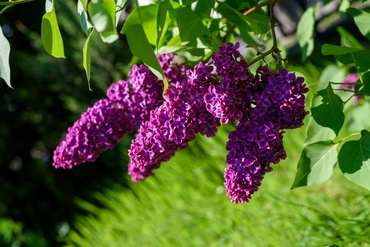
If you want to fill your garden with a lovely scent in spring, lilac is a fantastic choice. With their fragrant flowers in shades of pink, purple, white, and even occasionally yellow, lilacs (Syringa vulgaris) are one of the delights of springtime. Despite their beauty, they are surprisingly tough plants and easy to grow. Find out everything you need to know about how to grow and care for lilacs.
Where to Plant Lilacs
Lilacs prefer moist, well-drained, neutral to alkaline soil in full sun and grow well on chalky soils. They typically grow into large shrubs or small trees around 4 m (13ft) high and wide. Still, for small gardens, there are a few more compact varieties available, such as Syringa ‘Red Pixie’ or Syringa meyeri ‘Palabin,’ both of which reach around 1.5 m (5ft) tall.
The best time to plant lilacs is in late fall, before the ground freezes. If you miss your chance on fall planting, the next best time to plant lilacs is in early spring, after the ground thaws. Choose a position in full sun, with sufficient space to allow the lilac to spread as it grows. Dig a hole deep enough so that the plant will be at the same level in the soil as it was in the pot. Water well after planting, and keep watering regularly during the first year while the plant is getting established.
There’s no need to prune lilacs regularly, but you can deadhead them after they have finished flowering and trim them to keep them in good shape, removing any dead, damaged, or crossing branches. Old lilacs can be renovated by hard pruning in winter. They flower on the previous season’s growth, so winter pruning will mean no flowers in the following spring. Lilacs are generally trouble-free and easy to grow, but there are a few problems to watch out for when growing them: With their incredibly fragrant flowers, lilacs are one of the joys of spring, and they’re easy to grow in a sunny spot. Our centre has a superb range of flowering trees and shrubs to add structure and colour to your borders. Visit our centre today to see what’s new!How to Plant Lilacs
How to Prune Lilacs
Problems With Lilacs




